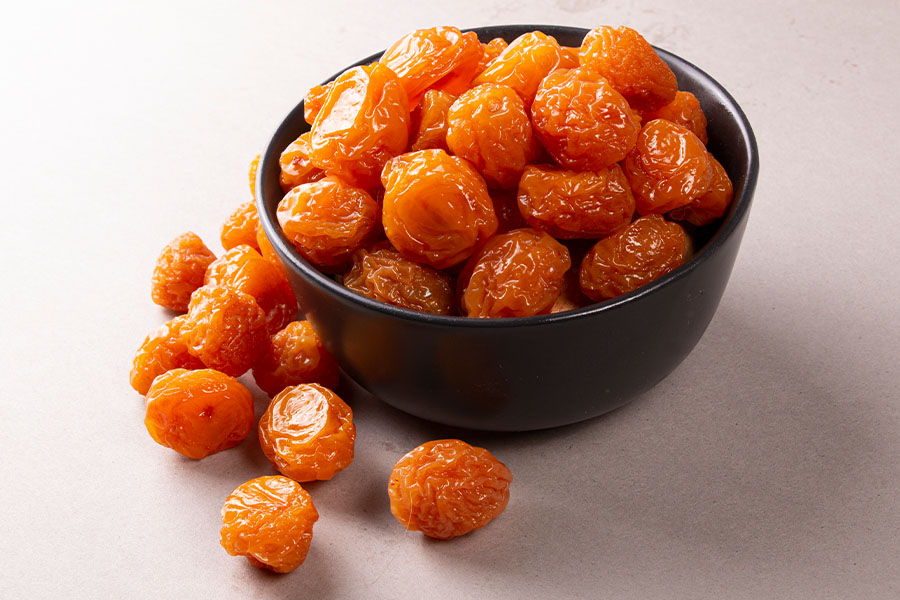Iranian dried plums are a popular snack and ingredient in Iranian cuisine. Also known as aloo bukhara in Farsi, dried plums are made by removing the moisture from fresh plums, resulting in a chewy, sweet and tangy fruit that can be enjoyed all year round. In this article, we will explore the history, production, health benefits, and culinary uses of Iranian dried plums.
- History
|Dried fruits have been a staple of Iranian cuisine for thousands of years. Iran has been known for its agriculture, and plums have been grown in the region for centuries. Drying plums was a way to preserve the fruit and make it available all year round. The ancient Persians believed that dried fruits had healing properties, and they used them for medicinal purposes.
- Production
Iranian dried plums are made from a variety of plums called “sour plums” or “prune plums.” These plums are smaller and tarter than the plums commonly eaten fresh. The process of drying the plums involves removing the moisture from the fruit. In Iran, the plums are typically dried in the sun or in a dehydrator. The plums are washed, pitted, and then placed on racks or trays to dry. Once the plums are dried, they are sorted by size and quality.
- Health benefits
Iranian dried plums are a nutritious snack that offers a range of health benefits. They are high in fiber, which promotes digestive health and can help lower cholesterol levels. Dried plums are also a good source of potassium, which is essential for healthy blood pressure and heart function. They are rich in antioxidants, which help protect the body from damage caused by free radicals. Dried plums also contain vitamins A and K, which are important for healthy vision and bone health, respectively.
- Culinary uses
Iranian dried plums are a versatile ingredient that can be used in a variety of sweet and savory dishes. They are often used in Iranian stews and rice dishes, adding a sweet and tangy flavor to the dish. Dried plums can also be used in baked goods, such as muffins and cakes, as well as in jams and chutneys. In Iranian cuisine, dried plums are often paired with savory ingredients like meat and poultry, creating a delicious balance of flavors.
One popular dish that features Iranian dried plums is called khoresh gheymeh, which is a stew made with lamb, split peas, tomatoes, and spices. The dish is typically served over rice and topped with fried potatoes and dried plums. Another dish that uses dried plums is called fesenjan, a stew made with chicken, walnuts, pomegranate molasses, and dried plums. The combination of sweet and sour flavors in this dish is a hallmark of Iranian cuisine.
In addition to being used in savory dishes, dried plums are also a popular snack in Iran. They can be eaten on their own or combined with other dried fruits and nuts to create a trail mix. In Iran, dried plums are often served as a sweet treat alongside tea.
Conclusion
Iranian dried plums are a delicious and nutritious ingredient that has been a part of Iranian cuisine for thousands of years. The process of drying plums has allowed Iranians to enjoy the fruit all year round, and it has become a popular snack and ingredient in Iranian dishes. Dried plums are rich in fiber, potassium, antioxidants, and vitamins, making them a healthy addition to any diet. Whether eaten on their own or used in savory or sweet dishes, Iranian dried plums are a unique and flavorful ingredient that adds a touch of Iranian culture to any meal.

